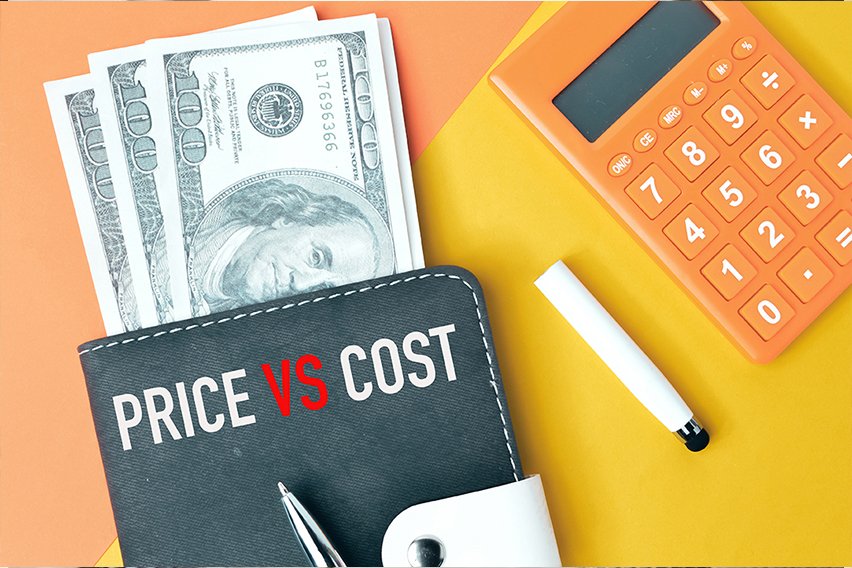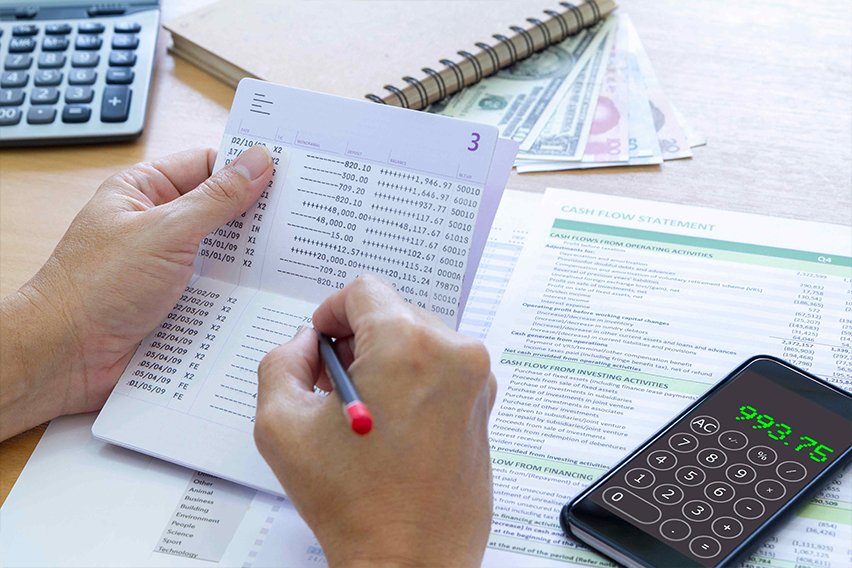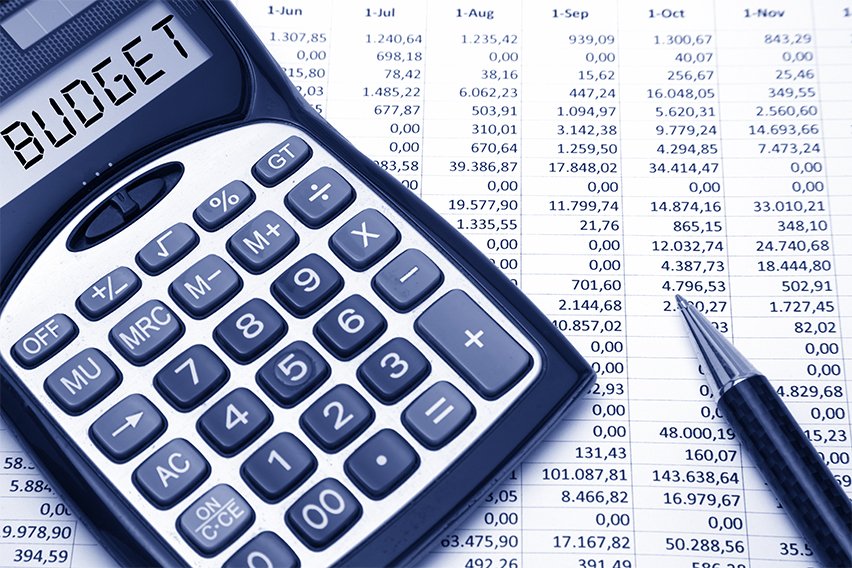How to Calculate EOQ (Economic Order Quantity)

Ordering the perfect amount of products is an art strictly based on gut feeling for some businesses. For other businesses, it’s a mathematical calculation.
The economic order quantity (EOQ) model has been used successfully for over a hundred years by massive companies such as McDonalds and Walmart. The EOQ formula helps you determine the ideal order size to avoid inventory costs associated with understocking and overstocking.
This guide will introduce you to the easy formula, how to calculate EOQ with an example, and the limitations you should consider when using the EOQ technique.
Here’s What We’ll Cover:
What is the Economic Order Quantity Model?
How to Calculate EOQ (With Example)
Limitations of the Economic Order Quantity Formula
Automate EOQ Calculations With Inventory Management Software
More Resources on Small Business Accounting
What is the Economic Order Quantity Model?
The economic order quantity, also called optimal order quantity, is the optimal number of products a business should include per order to reduce order costs, shortage costs, and storage costs.
There’s a cost advantage associated with buying inventory in bulk. However, there’s also a higher cost associated with storing more inventory. EOQ is about finding the balance between order costs and storage costs.
Save Money and Increase Cash Flow
EOQ also helps with cash flow planning. A big mistake that many small businesses make is to have too much cash tied in inventory. Even though it might look good on the assets section of the balance sheet, it’s not good for cash flow. This reduces the available cash that could be used for growth activities such as marketing.
Additionally, the EOQ model reduces the chance of inventory shortages which can lead to unrealized losses. When a business runs out of items, they don’t just lose out on potential sales. They run the risk of losing customers to competitors resulting in missed future sales too. In North America in 2020, products that were not available in stores led to a sales loss of $71.4 billion.

What is the EOQ Formula?
The EOQ formula is:
EOQ = (2 DemandOrder costs) Holding costs per unit
The factors are usually calculated on an annual basis. Let’s look at each factor in the equation more closely.
Demand
How many items do you sell year over year? How many units do you need to fulfill annual demand? If you don’t know or have inventory that’s been selling for less than a year, there are several forecasting tools you can use. One example is to multiply one month of sales by 12.
Order Costs
What is the order cost per purchase?
Order costs, also known as setup costs, include shipping and handling, packaging costs, related transportation costs, and clerical costs such as invoice processing.
The rule of thumb is that more orders are associated with higher order costs.
Holding Cost Per Unit
How much does it cost to hold each item or each unit per year?
Holding costs, also called carrying costs or storage costs, includes the following:
- Opportunity costs: The cost of having money tied up in inventory instead of elsewhere.
- Storage space costs: Costs associated with warehouse rent, utilities, property taxes, and other additional storage space costs.
- Miscellaneous costs: Costs such as insurance, security, and possible damage associated with certain inventory.
- Employee costs: Labor costs associated with handling the inventory, such as moving them around, storing them, and so on.
It’s common for holding costs to be about 25% of the value of the inventory, so sometimes businesses will default to somewhere between 20%-30% of the inventory value for their holding costs.
How to Calculate EOQ (With Example)
Bob from company ABC sells about 3000 shoes per year.
His holding cost per unit is about $5 per shirt, and his order costs are about $3 per order.
The formula would look like this:
Economic Order Quantity = (2 30003) 5
In this case, the economic order quantity is the square root of 3,600. So, EOQ=60.
This means that the ideal order quantity to optimize inventory costs is just slightly above 60 or whatever your EOQ is.
Additionally, to figure out the number of orders you should place per year, you’d take the total annual demand (3,000) and divide it by the EOQ (60). This means Company ABC should place about 50 orders per year.
Limitations of the Economic Order Quantity Formula
For the economic order quantity formula to be effective, you have to assume demand is steady and constant throughout the year. In other words, seasonal spikes and promotions aren’t accounted for in the formula. In these cases, you’d have to make a few adjustments to your order quantity.
You also have to assume order costs remain fairly constant, meaning that the formula doesn’t account for possible vendor discounts that you’d get for placing certain-sized orders.
Alternative Inventory Techniques
An alternative technique to consider is the Kanban order quantity. This lean, just-in-time technique doesn’t factor in storage cost or ordering cost and instead factors in daily demand, lead time, and target safety stock.
This technique doesn’t contradict or oppose the EOQ formula. Generally, this technique leads to more orders, which could be costly, but users of this technique rationalize that more orders could lead to certain benefits like improved vendor relationships.
Other techniques to consider include period order quantity, least total cost, least unit costs, and lot for lot.

Automate EOQ Calculations With Inventory Management Software
Inventory management software’s forecasting tools can combine various calculations, including EOQ, to account for seasons and promotional events. The software can also help recommend reorder points by factoring in lead time and safety stock to further optimize your inventory spend.
Reorder points are triggers that mean it’s time to place another order. This process can be easily automated with a comprehensive inventory management system.
Efficiently Manage Inventory
Calculating economic order quantity is easy if you only have to calculate the EOQ of one product. However, when you’re dealing with many products, calculating EOQ can be time-consuming and prone to human error.
Inventory management software automates EOQ calculations, and order placements with pre-defined reorder points so that you minimize your chance of ever running out of stock. Most inventory software can also connect to your accounting software too for a more streamlined experience.
To learn more, check out the 8 best inventory management software in 2021.
More Resources on Small Business Accounting
RELATED ARTICLES

 Small Business Bookkeeping: A Beginner’s Guide (2025)
Small Business Bookkeeping: A Beginner’s Guide (2025) Budgeting vs. Forecasting: What’s the Difference Between the Two?
Budgeting vs. Forecasting: What’s the Difference Between the Two? What is an Undeposited Funds Account? Everything You Need to Know
What is an Undeposited Funds Account? Everything You Need to Know Merchant Account vs Payment Gateway: What’s the Difference
Merchant Account vs Payment Gateway: What’s the Difference Human Resource Budgeting (HR) Planning: Key Components
Human Resource Budgeting (HR) Planning: Key Components What is a Virtual CFO & How to Become One?
What is a Virtual CFO & How to Become One?